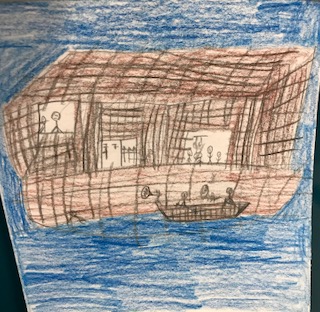The Randall Spelling Bee will be held on Friday, January 19th at 8:20 a.m. Next week we will be doing spelling bee rounds in our classrooms to determine who our representative and alternate will be. We will do five spelling bee rounds with the 1st, 2nd and 3rd place finishers earning points for each round. All students will have an opportunity to participate. Scoring will be as follows:
1st place = 5 points
2nd place = 3 points
3rd place = 1 point
After the five practice rounds the student with the most points will be our representative. The student with the second most points will be our alternate.
Have fun and good luck!
Friday, December 15, 2017
Wednesday, December 13, 2017
Social Studies: Facing Slavery
Essential Question: What was the impact of slavery on Africans?
Description: In a Response Group activity, student groups analyze and respond to three dilemmas faced by Africans during enslavement: trading slaves for guns in West Africa, surviving the Middle Passage, and living as a slave in the colonies.
After the reading and responding to the text students did a flip book to show understanding of life in each stage of the slave trade, as well as the dilemmas faced by the Africans in all three stages, West Africa, the Middle Passage and the American Colonies. Here are some great examples of their work:
Tuesday, December 12, 2017
Upcoming Writing Opportunities!
There are three writing contests coming up for third through fifth graders, which kids can work on over winter break.
Click here for the information in English!
Click here for the information in Spanish!Click here for the information in Hmong!
| This is just a screenshot!!!! Please use link above to connect to the document! |
Tuesday, December 5, 2017
Adding and Subtracting Fractions
This week we learned how to add and subtract fractions. This included finding equivalent fractions, comparing fractions and then adding/subtracting. Here are the fifth grade standards for fractions:
Use equivalent fractions as a strategy to add and subtract fractions.
CCSS.MATH.CONTENT.5.NF.A.1
Add and subtract fractions with unlike denominators (including mixed numbers) by replacing given fractions with equivalent fractions in such a way as to produce an equivalent sum or difference of fractions with like denominators. For example, 2/3 + 5/4 = 8/12 + 15/12 = 23/12. (In general, a/b + c/d = (ad + bc)/bd.)
Add and subtract fractions with unlike denominators (including mixed numbers) by replacing given fractions with equivalent fractions in such a way as to produce an equivalent sum or difference of fractions with like denominators. For example, 2/3 + 5/4 = 8/12 + 15/12 = 23/12. (In general, a/b + c/d = (ad + bc)/bd.)
CCSS.MATH.CONTENT.5.NF.A.2
Solve word problems involving addition and subtraction of fractions referring to the same whole, including cases of unlike denominators, e.g., by using visual fraction models or equations to represent the problem. Use benchmark fractions and number sense of fractions to estimate mentally and assess the reasonableness of answers. For example, recognize an incorrect result 2/5 + 1/2 = 3/7, by observing that 3/7 < 1/2.
Solve word problems involving addition and subtraction of fractions referring to the same whole, including cases of unlike denominators, e.g., by using visual fraction models or equations to represent the problem. Use benchmark fractions and number sense of fractions to estimate mentally and assess the reasonableness of answers. For example, recognize an incorrect result 2/5 + 1/2 = 3/7, by observing that 3/7 < 1/2.
Non-Fiction Writing
Our writing goal this quarter is to write Non-Fiction pieces. Our "I Can" statements include: I can write informative/explanatory tests to examine a topic and convey ideas and information clearly.
We will get to that goal by working on how to organize our writing, so our first lessons were on how to write complete and organized paragraphs. We learned about the three parts to a paragraph, the topic sentences, the detail sentences, and the concluding sentence. The following shows the process we went through to plan and draft our non-fiction writing.
We will get to that goal by working on how to organize our writing, so our first lessons were on how to write complete and organized paragraphs. We learned about the three parts to a paragraph, the topic sentences, the detail sentences, and the concluding sentence. The following shows the process we went through to plan and draft our non-fiction writing.
Subscribe to:
Comments (Atom)



















